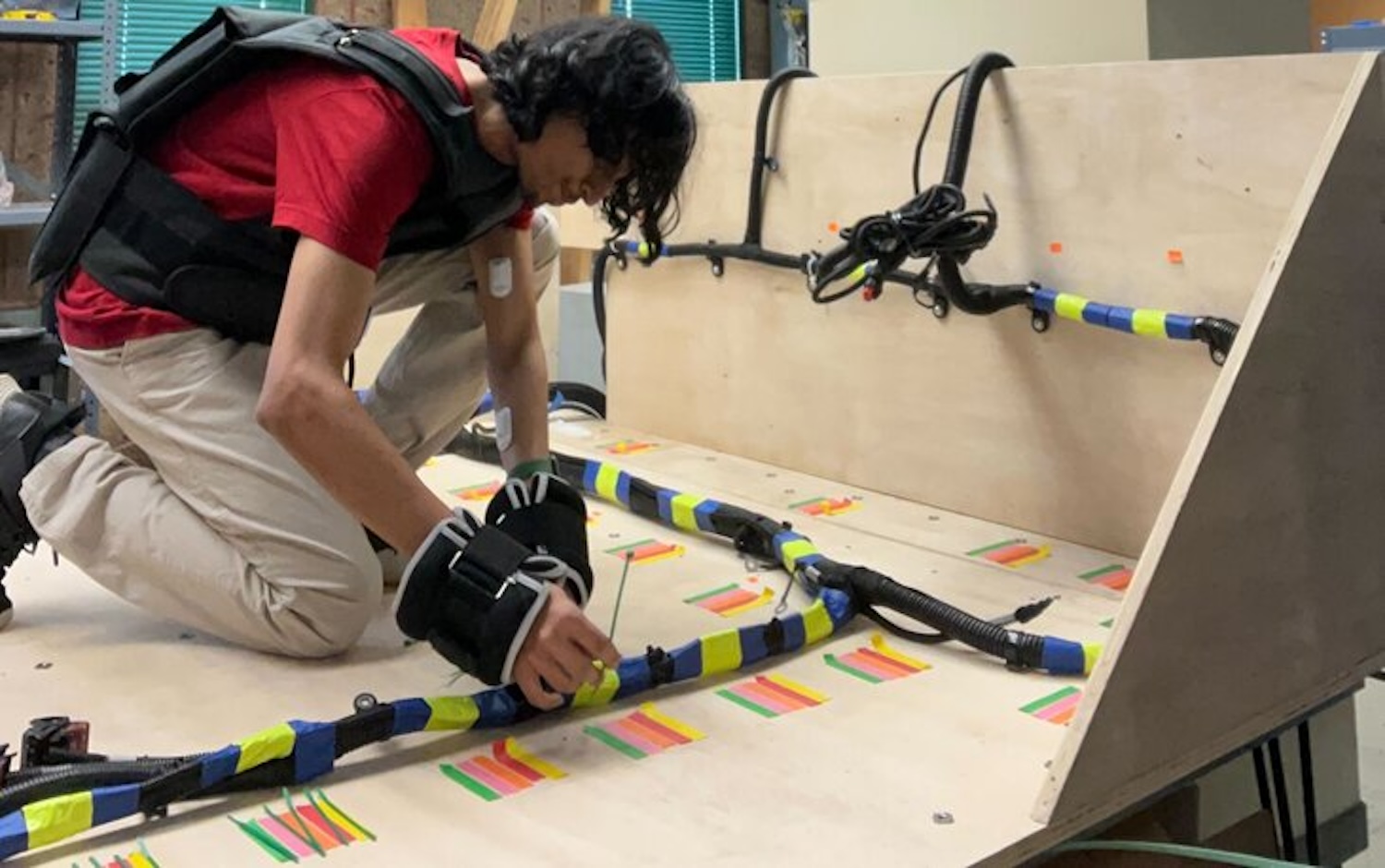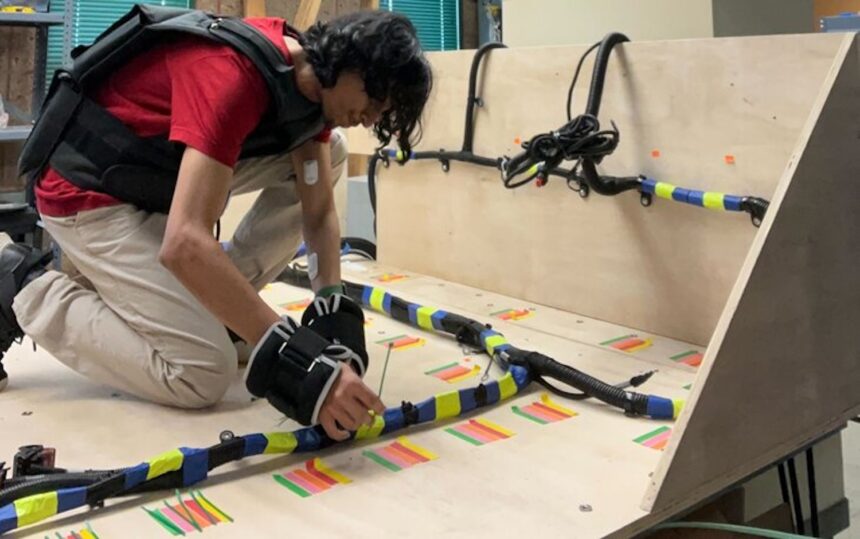“`html

Innovative Wearable Technology to Combat Manufacturing Fatigue
The manufacturing sector is notorious for its high rates of workplace injuries, often attributed to significant levels of both physical and mental fatigue among workers. To address this pressing issue, researchers have developed a cutting-edge system of wearable sensors that utilize machine learning algorithms to monitor employees for signs of exhaustion and physical strain. The ultimate goal is to enhance safety measures on job sites and reduce the likelihood of accidents.
Research Insights from Northwestern University
A recent study conducted by a team at Northwestern University, published in the October edition of PNAS Nexus, outlines the design and functionality of these innovative sensors. The research involved creating an interconnected network comprising six wearable sensors strategically placed on the torso and arms. This setup was complemented by two depth cameras that tracked joint movements, along with an HD webcam designed to assess movement intensity, repetition, and strength degradation over time. Once activated, these devices continuously collected data on heart rate, skin temperature, and movement patterns.
Due to the absence of universally accepted biomarkers for fatigue assessment, researchers relied on participants’ self-reported exertion levels rated on a scale from 0-10. This subjective data was then integrated into a machine learning model trained to predict real-time fatigue levels more accurately than previous methodologies.
The Potential Impact on Manufacturing Practices
The research team emphasized that integrating advanced technologies for real-time fatigue monitoring could transform manufacturing practices by optimizing work schedules and implementing flexible work/rest cycles while addressing the challenge posed by undefined biomarkers.
Testing Methodology: Real-World Applications
To evaluate their system’s effectiveness, researchers enlisted 43 participants aged between 18 and 56 years old. They simulated two demanding manufacturing tasks—wire harnessing and composite sheet layup—while wearing weighted vests up to 40 pounds in order to accelerate fatigue levels typically experienced at shift’s end. Throughout this process, sensor readings were closely monitored alongside predictions generated by the machine learning program.
In addition to laboratory testing, researchers deployed their sensors (without added weights) in actual factory settings across two different locations where workers reported finding them user-friendly and minimally intrusive.
[Related:[Related:[Related:[Related:BMW integrates humanoid robots into South Carolina factory operations.]
Key Findings: Understanding Fatigue as a Continuous Variable
One significant conclusion drawn from this study is that effective feedback regarding worker fatigue necessitates viewing exertion as a continuous variable rather than categorizing individuals simply as fatigued or non-fatigued—a distinction deemed insufficient for proactive safety interventions.
Moreover, recognizing individual differences is crucial; factors such as age, gender, and weight can influence which physical indicators are most relevant for assessing fatigue levels. However, certain universal trends emerged during testing; notably increased exertion was often reflected in measurements taken from users’ non-dominant arms or through ambulatory movement intensity captured via chest-mounted sensors. Additionally recorded signs like elevated heart rates or body temperatures contributed valuable insights into overall exertion assessments.
A Vision for Future Safety Monitoring Systems
Researchers aspire that similar sensor systems will provide more precise monitoring solutions regarding manual labor-related fatigue within factories moving forward. To facilitate broader access to their findings they have made their design methodologies available online as open-access resources.
The Ethical Considerations Ahead
Nevertheless technology’s efficacy hinges significantly upon responsible implementation by its users; thus it remains essential that manufacturers adhere strictly ethical standards when deploying such systems within workplace environments.
“While our primary aim through this research focuses on enhancing worker safety while minimizing risks through active feedback mechanisms,” stated the research team “we acknowledge important ethical implications tied with introducing these systems into real-world settings.” They expressed hope that ongoing advancements—including efforts aimed at predicting physical exhaustion—will foster constructive dialogues surrounding practical deployment strategies.”
Source
“`





